Five ideas that might have saved New York City from flooding
New York City didn’t have to flood quite this badly, or, at least, it doesn’t have to again. There’s no shortage of ideas out there for how the city could adapt to rising sea levels (or, we’ll just say it: climate change). A lot of them haven’t been deployed or more seriously studied because they seem too expensive or daunting. But an event like Sandy quickly changes that calculus. Suddenly, some of these solutions don’t look quite as expensive as cleaning up after a hurricane:
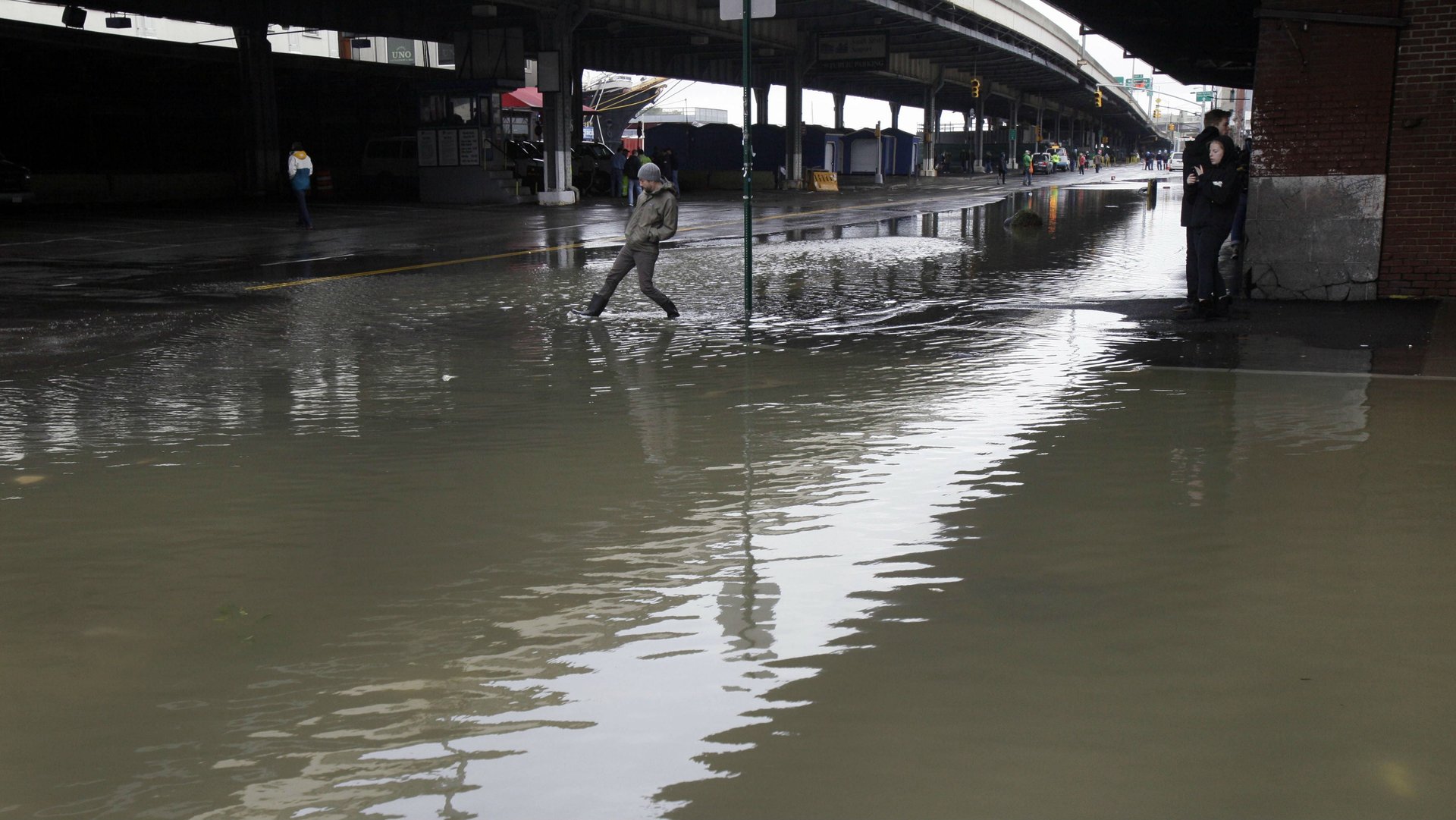

New York City didn’t have to flood quite this badly, or, at least, it doesn’t have to again. There’s no shortage of ideas out there for how the city could adapt to rising sea levels (or, we’ll just say it: climate change). A lot of them haven’t been deployed or more seriously studied because they seem too expensive or daunting. But an event like Sandy quickly changes that calculus. Suddenly, some of these solutions don’t look quite as expensive as cleaning up after a hurricane:
1. Sea Gates and Surge Barriers. We’ll start with the biggie, a multi-billion dollar idea to keep storm surge out of New York by blocking it with some kind of moveable sea wall. Such infrastructure actually exists in England and the Netherlands, and a Dutch design and engineering firm was among several that presented ideas for such a barrier at a conference in New York City in 2009. Any surge barrier would have to be able to open for passing ships, while also doing the least to disturb the natural ecosystem. Arcadis, the Dutch firm, proposed putting this 4,800-foot-long barrier in the Verrazano Narrows. One large sliding piece of it, 860 feet long, would enable ships to pass and could be closed in advance of a storm.
Arcadis estimated at the time that the cost of constructing such a project would be about $6.5 billion. This sounds ridiculous. Until, of course, you see the estimated price tag on this week’s damages.
2. Elevated infrastructure. There are very few buildings in the entire state of New York built at grade at elevations below sea level. But New York City has constructed one massive piece of infrastructure below that threshold: the subway system. As we saw this week, flooding can devastate an underground network of tunnels, train platforms and corridors. So how do you keep more of that water out? For one thing, elevating subway entrances would help. Bangkok, another low-lying city susceptible to rising tides, has built precisely these kinds of subway entrances. They’re raised a meter off the ground and include built-in floodgates. A subway rider in Bangkok must first walk up a stairway from the sidewalk before heading down into the metro:
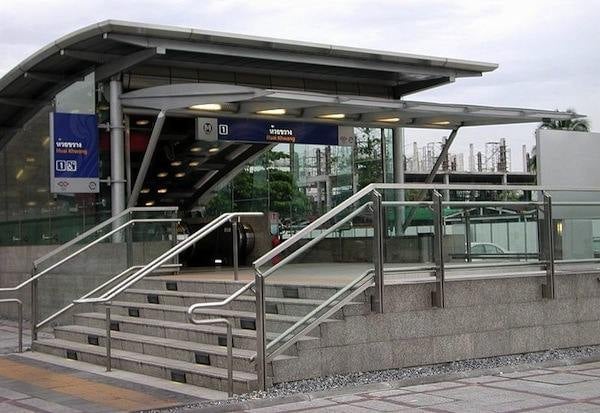
The New York MTA has also experimented in the past with elevating the grates that ventilate the subway system, another piece of transit infrastructure susceptible to flooding. Several years ago, the MTA commissioned architecture firm Rogers Marvel to design prototype elevated subway vents that would double as street furniture:
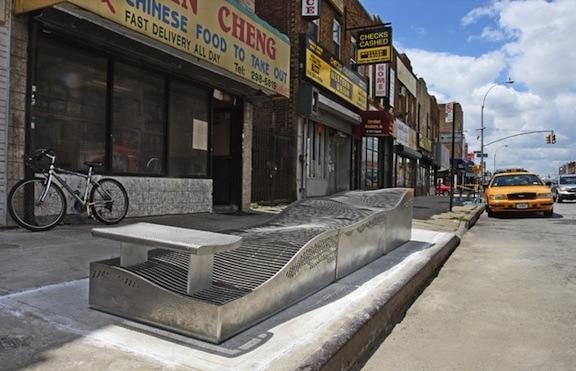
3. Wave Attenuators. One of New York’s biggest problems is that the city and the sea meet along such a hard edge. Development butts right up to the water, with little natural barrier separating the two or serving as a kind of buffer during floods. If New York could re-imagine its coastlines to include new wetlands or barrier islands along, for instance, the southern tip of Manhattan, that natural landscape extending out into the water could help mitigate the impact of a storm rolling in. Several of the architecture firms involved in the 2010 Museum of Modern Art exhibition “Rising Currents” (which we mentioned earlier this week) deployed this tactic in their plans for a new New York coastline.
Architecture Research Office and dlandstudio set out to rethink the “ecology and infrastructure in a sustainable partnership, thus changing the direction of the last 400 years of development.” Along their graduated edge of Manhattan, they envisioned adding 80 acres of new park network, freshwater wetlands and tidal salt marshes extending into the upper bay.
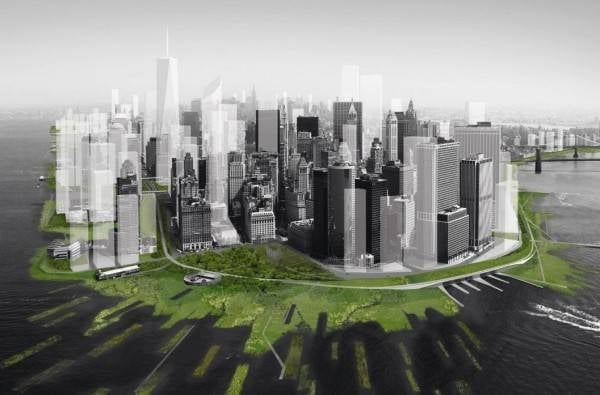
4. Oysters and Sand. Two ideas for enhancing the natural protection of the city’s beaches and harbors. “Beach nourishment” is an old one, in fact an idea that was apparently first tried in the U.S. at Coney Island in the 1920s. We already buffer communities from rising tides by adding to their beaches… literally trucking in sand. The state of New York currently does this with about 1 million cubic yards of sand each year. But according to a state climate change studypublished last year, New York will need to boost that amount by 2.3 to 11.5 percent by the 2020s to keep pace with expected sea level rise. By the 2050s, that sand volume will need to increase by 18 to 26 percent.
Or there’s this: New York could truck in new oyster colonies to repopulate the ones we killed off over the years. Paul Greenberg wrote lovingly in defense of this idea in the New York Times earlier this week:
I’m not talking about oysters to eat — although a dozen would be nice to go with that leftover bottle of Champagne that I really should drink if the fridge goes off. I’m talking about the oysters that once protected New Yorkers from storm surges, a bivalve population that numbered in the trillions and that played a critical role in stabilizing the shoreline from Washington to Boston.
5. Different development patterns, duh. The previous two ideas would build out the coastline with added sand, marshes or man-made wetlands. But of course, it only makes sense to extend the New York coastline if we don’t then insist on building on top of it. Grist posted some great historical maps earlier this week showing that the most flood-prone evacuation zones on the southern tip of Manhattan today sit atop landfill we created there in the past. We have a terrible track record of trying to build man-made land where water once was (who would have thought there would be such consequences!).
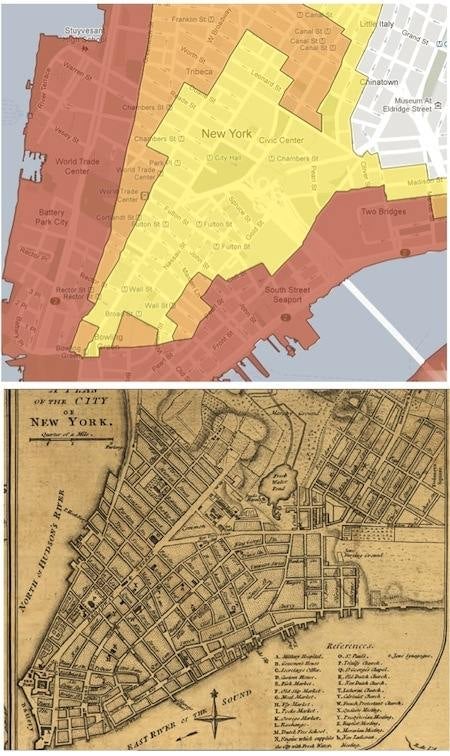
And so we should keep that in mind as we talk today about other interventions in nature at the coastline. Developers love waterfront property, and many of our best solutions involve creating new waterfront that will be no one’s property (or reclaiming waterfronts for posterity). The most straight-forward solution would be to scale back existing development on New York’s waterfront. But as the New York Times reported in an eerily prescient article in September:
The city’s plan for waterfront development dismisses any notion of retreat from the shoreline. Curbing development or buying up property in flood plains, as some smaller cities have done, is too impractical here, city officials say, especially because the city anticipates another million residents over the next two decades.